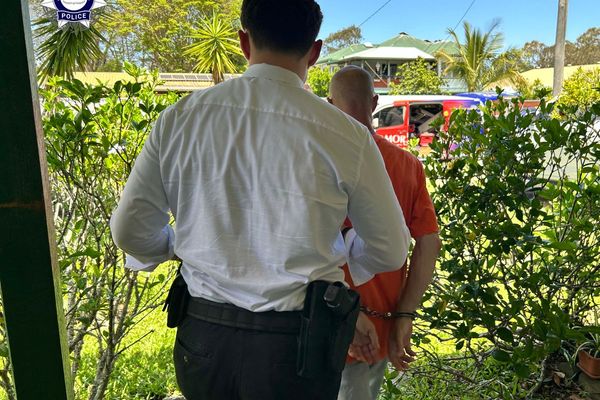Iranian security forces have opened fired on protesters in Zahedan a month after a massacre that killed scores of people in the restive south-eastern city.
Crowds were also fired on in Mahabad, another city with a long history of resistance against the regime, in renewed deadly violence at the end of the sixth week of unrest sparked by the death in police custody of Mahsa Amini on 16 September.
There were reports of as many as six killed in Zahedan on Friday, including a 12-year-old boy. In a desperate attempt calm local anger, at midnight on Thursday the provincial authorities had suddenly sacked the chief of Zahedan police and a second senior officer due to “deficiencies” in their handling of protests in the city on 30 September.
In a highly unusual admission of fault on the part of Iran’s security apparatus, the provincial authorities admitted that police had been responsible for the death of as many as 35 people on 30 September, including some innocent people leaving prayers.
Zahedan is the capital of Sistan-Baluchistan province, one of Iran’s poorest, and the provincial security council promised to provide compensation to the injured and their families. The 30 September protest had been called in response to the reported rape of a teenage girl by a police commander, and some rights groups have put the death toll on the day – which has come to be known as Bloody Friday among Iranians – at above 90.
The midnight admission had clearly been intended to avert trouble at Friday prayers after repeated accusations by Maulvi Abdul Hamid, a leading Sunni cleric based in Zahedan, that the supreme leader of the majority Shia country – Ayatollah Ali Khamenei – had failed to punish the security forces for the killings.
Tribal elders had gathered on Thursday night at the mosque at which the cleric speaks to show their support for him, after he came under attack from clerics loyal to the government.
Fearing trouble, the security services sent reinforcements to the city before Friday, but huge crowds attended prayers at the Makki mosque and dozens then took to the streets, according to activists.
The scale of the subsequent violence is disputed by official news agencies, who blamed “rioters” for the unrest. Zahedan is one of the few Sunni-majority cities in predominantly Shia Iran, and there will be concern in Iran and beyond if ethnic and religious tensions come to the surface alongside the calls for greater women’s rights.
Videos widely shared online showed people rallying on Friday across Iran, including in Mahabad, the flashpoint western city where a rights group said security forces had killed at least four people in the past two days.

The Norway-based Hengaw organisation, which reports on human rights violations in Iranian Kurdistan, said that two more people were killed on Thursday in Baneh, another city near Iran’s western border with Iraq.
And Amnesty International said late on Thursday that “unlawful killings” by the security forces had claimed at least eight lives in four provinces within 24 hours.
In Mahabad, Thursday night’s bloodshed came as mourners paying tribute to Ismail Mauludi, a 35-year-old protester killed the previous night, made their way from his funeral towards the governor’s office. “Death to the dictator,” protesters yelled, using a slogan aimed at the supreme leader, as the governor’s office burned.
Funerals for protesters have become flashpoints in the weeks-long unrest that has gripped the clerical state, and on Friday the UN human rights office said it was concerned that authorities were refusing to release some of the bodies of those killed.
“We’ve seen a lot of ill treatment … but also harassment of the families of protesters,” Ravina Shamdasani, spokesperson of the office of the high commissioner for human rights, told a Geneva press briefing. “Of particular concern is information that authorities have been moving injured protesters from hospitals to detention facilities and refusing to release the bodies of those killed to their families.”
Shamdasani added that in some cases, authorities were placing conditions on the release of bodies, asking families not to hold a funeral or speak to the media.
In a related incident, the family of the well-known journalist Reza Haghighatnejad have accused security agents of “abducting” his body after his death in Germany, in order to prevent his funeral taking place. Haghighatnejad, 45, a former editor at IranWire and eloquent exiled critic of the regime, died from cancer in Berlin on 17 October. His body was repatriated to Iran for burial on 25 October.
In comments made on video, his mother said: “I have not seen my son in six years. They let me bring his body to Iran, but Sepah (the Islamic Revolutionary Guards Corps) or police abducted his body at the airport.”
Haghighatnejad’s sister Sara said she had been unable to find any information on his body.
RFE/RL, where he worked from 2019 until his death, quoted relatives and friends as saying the necessary permits had been issued to bury the body in Haghighatnejad’s home town of Shiraz. But the security and intelligence agencies were putting pressure on the family to agree to his body being buried in another cemetery outside the city.
The RFE/RL president and CEO, Jamie Fly, said the Iranian regime’s manipulation of Haghighatnejad’s family was “disgraceful and disgusting”, and that they deserved to be allowed to bury him without harassment.







